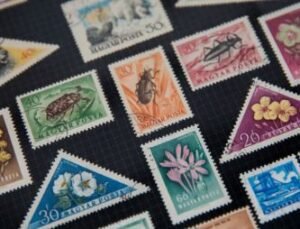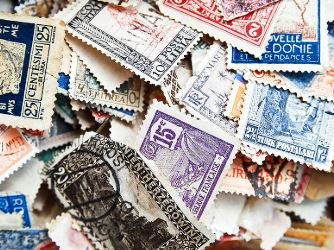Stamp collecting, or philately, has long been a popular hobby, with collectors seeking rare and valuable stamps from across the world. However, as in any form of collecting, the market for stamps is not immune to deception. Understanding stamp reprints and forgeries: The fine line between value and deception is crucial for any collector, whether you’re a seasoned philatelist or just starting your journey. While reprints can offer a legitimate way to acquire a piece of history at a more affordable price, forgeries are designed to deceive and can quickly undermine the integrity of a collection.
In this article, we will explore the differences between stamp reprints and forgeries, the risks involved, and how to navigate this fine line to protect your collection and ensure you’re investing in genuine stamps.

What Are Stamp Reprints and Forgeries?
Before diving into the complexities of understanding stamp reprints and forgeries: The fine line between value and deception, it’s essential to define both terms.
- Stamp Reprints: A reprint is a reproduction of an original stamp, usually made for commemorative purposes or as a way to offer collectors a less expensive version of a rare or valuable stamp. Reprints are often produced by postal authorities or authorized entities and are typically marked as reprints to differentiate them from the original. While they may look identical to the original stamps, they carry no intrinsic historical value and do not hold the same price as the authentic stamp.
- Stamp Forgeries: A forgery, on the other hand, is a counterfeit stamp created with the intention to deceive collectors. Forgers attempt to replicate the appearance of valuable stamps in order to sell them as original. These fakes may look almost identical to the original at first glance but often lack the finer details, such as the watermark, printing technique, or perforation pattern that make genuine stamps distinctive.
Understanding stamp reprints and forgeries: The fine line between value and deception comes down to intent and authenticity. Reprints are legal reproductions, while forgeries are illegal attempts to deceive collectors into paying for something that is not genuine.
Why Understanding Stamp Reprints and Forgeries: The Fine Line Between Value and Deception is So Important
When collecting stamps, it’s crucial to understand the difference between reprints and forgeries, as they can significantly affect the value of your collection. Understanding stamp reprints and forgeries: The fine line between value and deception can help you avoid the costly mistakes that many collectors have fallen victim to.
- Value Implications: The value of a genuine stamp is often tied to its rarity, historical significance, and condition. Reprints, while they may look similar to the original stamps, typically have little to no value in the philatelic market. In contrast, forgeries are meant to mimic valuable stamps and are sold at prices that reflect the original stamp’s market value. If you fail to differentiate between an authentic stamp, a reprint, and a forgery, you could end up overpaying or losing out on significant financial value.
- Investment Risks: Many collectors view stamps as a form of investment. A well-curated stamp collection can increase in value over time, especially if it includes rare, original stamps. However, purchasing forgeries, even unknowingly, can lead to significant financial loss. If you’re not careful, forgeries can quickly erode the value of your collection. For reprints, while they may not carry the same risk as forgeries, they still don’t contribute the same long-term value as the original stamps.
- Personal Satisfaction: Beyond financial considerations, stamp collecting is also about personal enjoyment. Owning a genuine, rare stamp is often a source of immense pride for collectors. Understanding stamp reprints and forgeries: The fine line between value and deception is also crucial to ensure that your collection has meaning and authenticity, which can deepen your appreciation of the hobby.

Identifying Stamp Reprints and Forgeries
Now that we understand the importance of understanding stamp reprints and forgeries: The fine line between value and deception, let’s look at some ways to differentiate between these types of stamps. Whether you are buying stamps at an auction, from a dealer, or from a private sale, it’s essential to know how to spot a forgery and identify a reprint.
- Examine the Printing Technique
Genuine stamps are produced using specific printing methods, such as engraving, lithography, or offset printing. Forgers may not be able to replicate these techniques accurately. To spot a forgery, closely examine the stamp’s printing details, including the sharpness of the image and the presence of fine details. Reprints often use modern printing methods, which may have slight differences in texture or quality compared to the originals. - Check for Watermarks and Perforations
Watermarks and perforation patterns are key distinguishing features of many original stamps. Watermarks are often invisible to the naked eye but can be detected using specialized tools. Forgeries often lack these distinguishing features or replicate them poorly. Reprints, on the other hand, typically have the watermark and perforation correctly, but they may still be distinguishable by other factors such as color or printing style. - Study the Stamp’s Condition
The condition of a stamp is one of the most important aspects of its value. Forgers may intentionally age their creations to make them look older, but their methods often result in inconsistencies in how the stamp deteriorates. Reprints are usually in pristine condition, as they are newly produced. When examining a stamp, consider the ink quality, paper texture, and age to help determine its authenticity. - Use Certified Experts
One of the most reliable ways to avoid purchasing forgeries or incorrectly identified reprints is to consult with a stamp expert. Professional philatelists and certified authenticators can examine stamps and provide verification of their authenticity. Certified certificates of authenticity are an excellent way to ensure you’re purchasing legitimate stamps.

The Impact of Understanding Stamp Reprints and Forgeries: The Fine Line Between Value and Deception on Your Collection
Building a stamp collection is an exciting and rewarding journey, but it requires diligence and knowledge. Understanding stamp reprints and forgeries: The fine line between value and deception is critical for ensuring that your collection maintains its value and integrity. As a collector, always take the time to carefully research stamps before making any purchase. Avoid rushing into deals without verifying the authenticity of stamps, and always work with reputable dealers and auction houses.
By becoming familiar with the characteristics of genuine stamps, reprints, and forgeries, you can better navigate the world of philately and build a collection that is not only valuable but meaningful. Remember, in the world of stamp collecting, knowledge is your best tool to avoid deception and protect your investment.

Conclusion: The Value of Understanding the Fine Line
Understanding stamp reprints and forgeries: The fine line between value and deception is essential for anyone serious about stamp collecting. While reprints can provide collectors with a cost-effective way to enjoy certain stamps, forgeries are a deceptive threat that can damage the integrity of a collection. Armed with the knowledge of how to identify these flaws, collectors can ensure that their collections remain authentic, valuable, and a source of personal satisfaction.
In the end, stamp collecting is not just about owning rare stamps, but about understanding their history, their significance, and ensuring that what you hold in your collection is genuine and true. By understanding the fine line between reprints, forgeries, and authentic stamps, you can ensure that your passion for philately is based on real value and not on deception.



